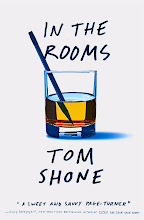Feb 2, 2010
Tracking shots: can we find something else to like?
"The extended take or long take is the first time I noticed a filmmaker articulating cinematic space and pushing his/her desire for notions of auteurism" says Mike Le who has compiled his 20 favorite tracking shots over at Geekweek. It's the usual suspects: Rope, The Shining, Weekend, Boogie Nights, The Player, Children of Men, Touch of Evil, Goodfellas, etc etc. I know that a liking for these things is virtually compulsory in any aspiring film geek ("the audacity of Cuaron's vision is never in question," runs a typical commentary from Le, "This scene is the strongest conceptually from beginning to end") but can someone explain to me why, if these things are supposed to be such a filigree mark of their auteur's singular vision, every single filmmaker uses them? How singular is that? Who's vision is being expressed exactly? The history of the tracking shot is one of ignominious decline. Scorsese's Goodfellas marked the last good one; but Anderson had to put his at the beginning of Boogie Nights, before we got too involved in the story; by the time of Atonement, it was merely a wannabe auterist tic. For many film geeks of course, wannabe auterists tics are the whole point of the exercise. They're so easy to spot! Not me. When I watch a film, I want to get lost. Can we find something else to admire?
Subscribe to:
Post Comments (Atom)






















Biggest offender was Atonement, the scene at Dunkirk. What could have been, SHOULD have been, one of the most powerful moments in that (imho totally overrated) movie was instead such a screaming, preening "look-at-me-and-my-great-tracking-shot" advertisement for director Joe Wright.
ReplyDelete